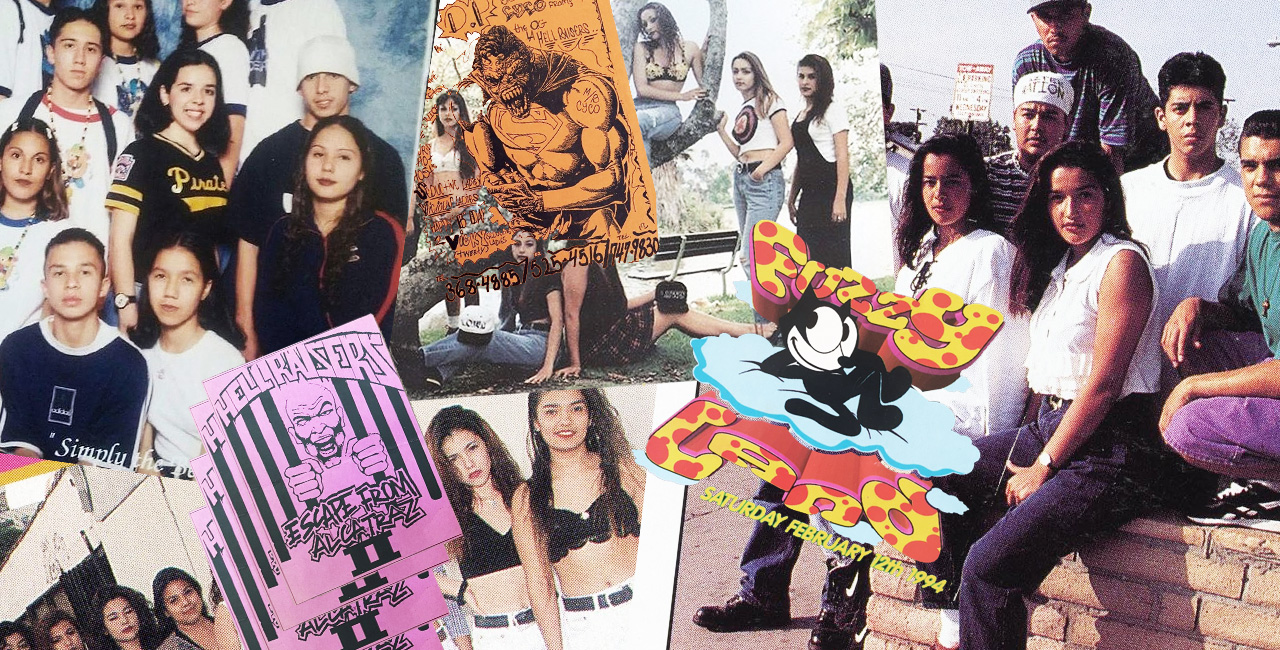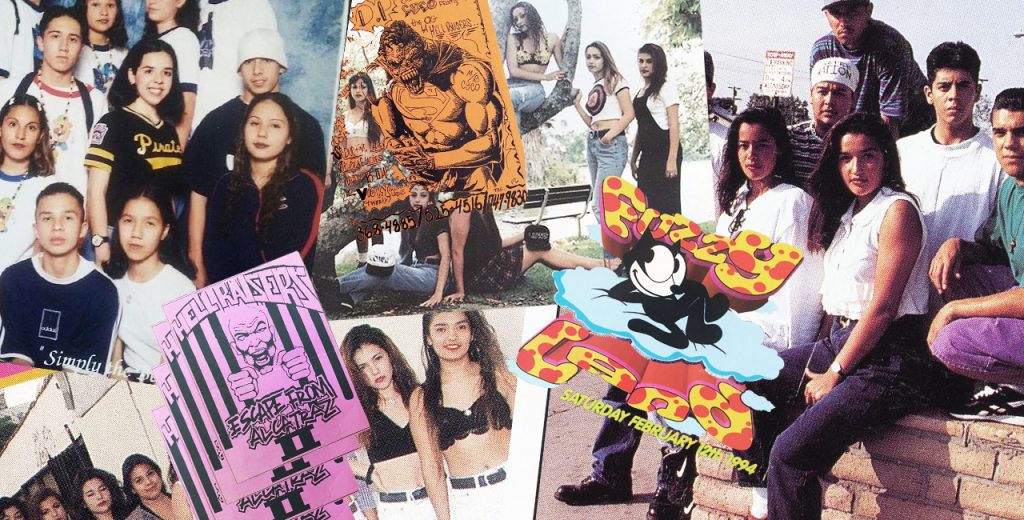In the early to mid-1990s, party crews like Looney Tunes, Ladies of Insanity, Brown Authority, Angels of Eagle Rock, and Mind Crime gave bored Latino teens in Southern California an escape from school and a better alternative to gang life. According to LA Weekly, cops, school officials, and parents demonized ditch parties – so-called because teens skipped school to attend these mid-afternoon get togethers. But artist Guadalupe Rosales – a member of Aztec Nation crew – is now seeking to contextualize why they were necessary for Latino youth. On her Map_Pointz Instagram account, Rosales – who also runs Veteranas and Rucas and has become something of a historian after documenting this period of time – posts images of partygoers proudly repping their crews during LA’s early rave scene.
Though the first half of the 90s were the heyday for ditch parties, they date back to at least the 1960s. As a matter of fact, 64-year-old Antonio Villaraigosa – the former Los Angeles mayor and a current candidate for California governor – frequently attended ditch parties in his youth. Throughout the decades, the music, style, and attendees changed, but the parties remained misunderstood.
In 1993, a Fox News report focused merely on the debaucherous behavior – teens drinking and consuming drugs. But even as the students said they didn’t feel challenged in school or that this provided them a violent-free space, the segment dismissed their valid concerns. And worse, Fox News shamed their parents – never once taking into consideration that unlike more affluent moms and dads, they worked longer hours, which kept them from their kids.
But Rosales’ Instagram – named after the map points they used instead of addresses to throw parents and authorities off the scent – is giving these communities a chance to shape these stories, in a way that they couldn’t as teenagers. The about year-old account has also inspired people like Virginia Arce to further elaborate how the social and political climate led to these backyard parties. In her essay, “Splendid Intensity, Splendid Subversion: Transgression on the Dance Floor,” Arce goes into the laws set to discriminate against undocumented youth and the fact that those in power criminalized them for being brown and poor – giving the necessary context to understand why Latino youth in LA needed this space.
“By choosing to be with their peers and in spaces where familial bonds were established and strengthened, these youths were able to rout social isolation and form alliances that could exploit the gaps left open by a lack of stability in the social order,” Arce argues. “Theirs was a brilliant exploitation of the failure of the social contract which they were able to see and sense was a ruse. They implicitly understood that the promises of fair rewards for honest work were false—especially for the disenfranchised and disempowered, and they were able to use music as a vehicle by which they could collectively experience a suspension of social and psychic stultification.”
Police usually broke up these fleeting parties in just a few hours. In the early days, officers received noise complaints because ditch parties, which brought together people from different walks of life, were mostly peaceful.
“The atmosphere of the party was such that there’d be gangsters in the corner, there would be rebel guys that looked like Morrissey,” said Adrian Sandoval, aka Developer, to Resident Advisor. “The hippie guys on this corner, the graffiti guys on this corner, the new wave kids – it was this mix of people at your party, there were these little huddles. And then you have ravers – and the gangsters always fucked it up. They’d be there and they’d start shooting, and then everybody would go down.” Eventually, these parties turned more violent and became riskier to host because of neighborhood gangs.
But now we have this Instagram account that captures what they meant for a generation – and why they still matter amid the gentrification that has taken root in the same houses that served as the setting for these ditch parties. “This project is about preserving a history,” Rosales told LA Weekly. “What motivated me to do this is because I was seeing that my neighborhood was changing a lot and I needed to do something about it, whatever that meant. That’s why I’m interested in collecting stories, materials, and why I came back … because I wanted to see the neighborhood before it changed. In terms of the issues that are going on in Boyle Heights, I think my part in serving is doing this project.”




